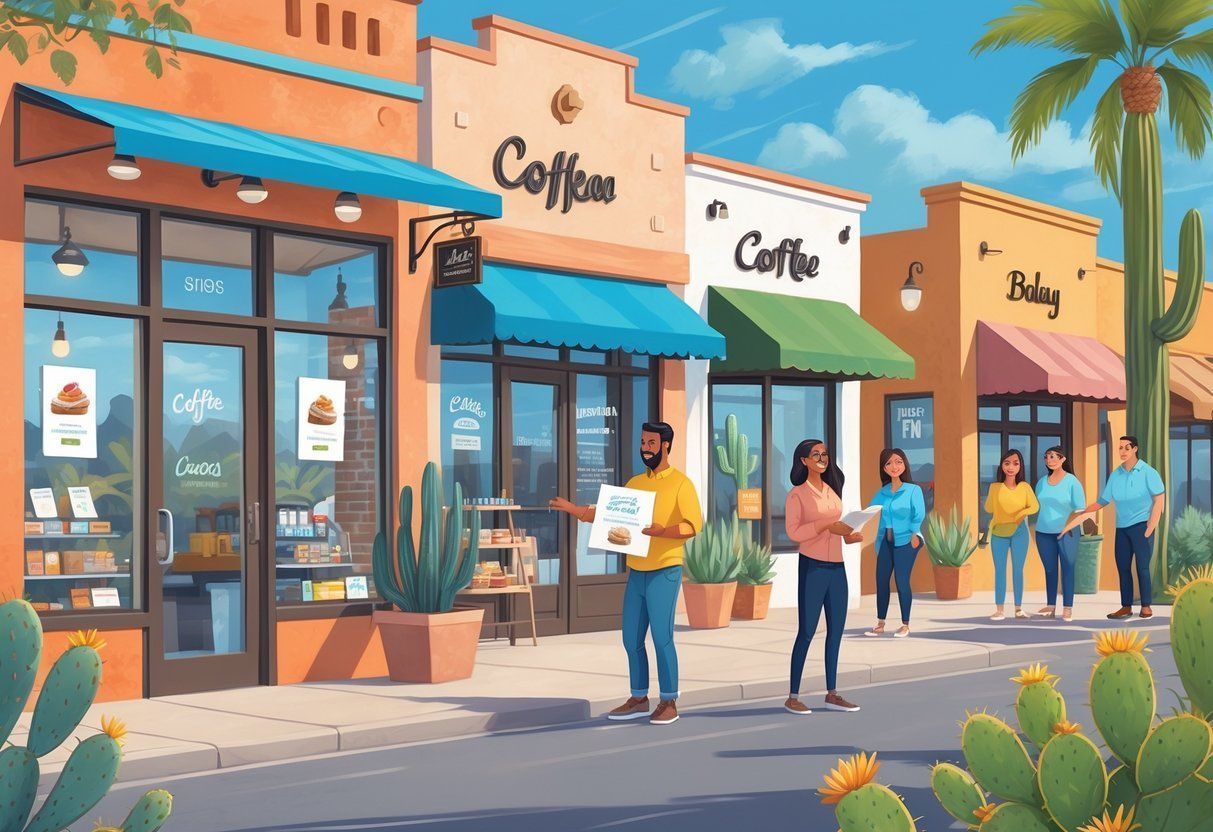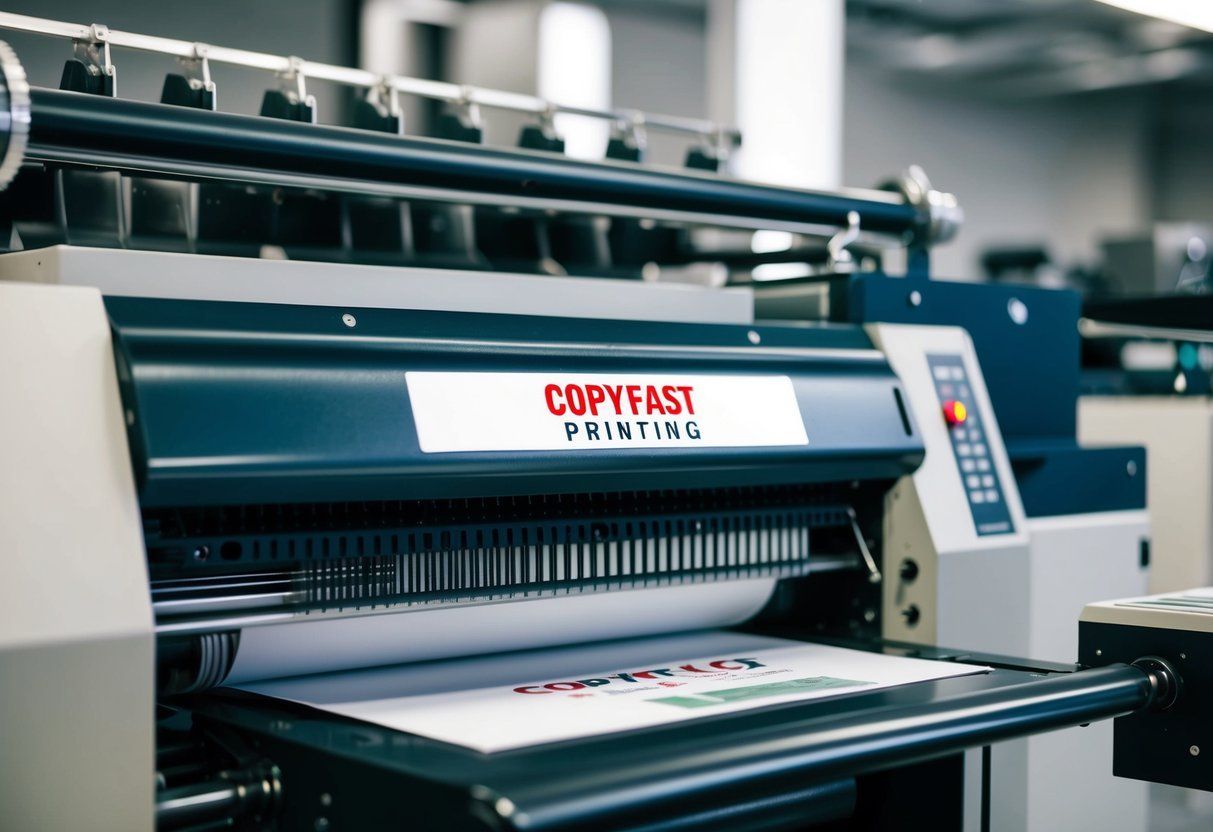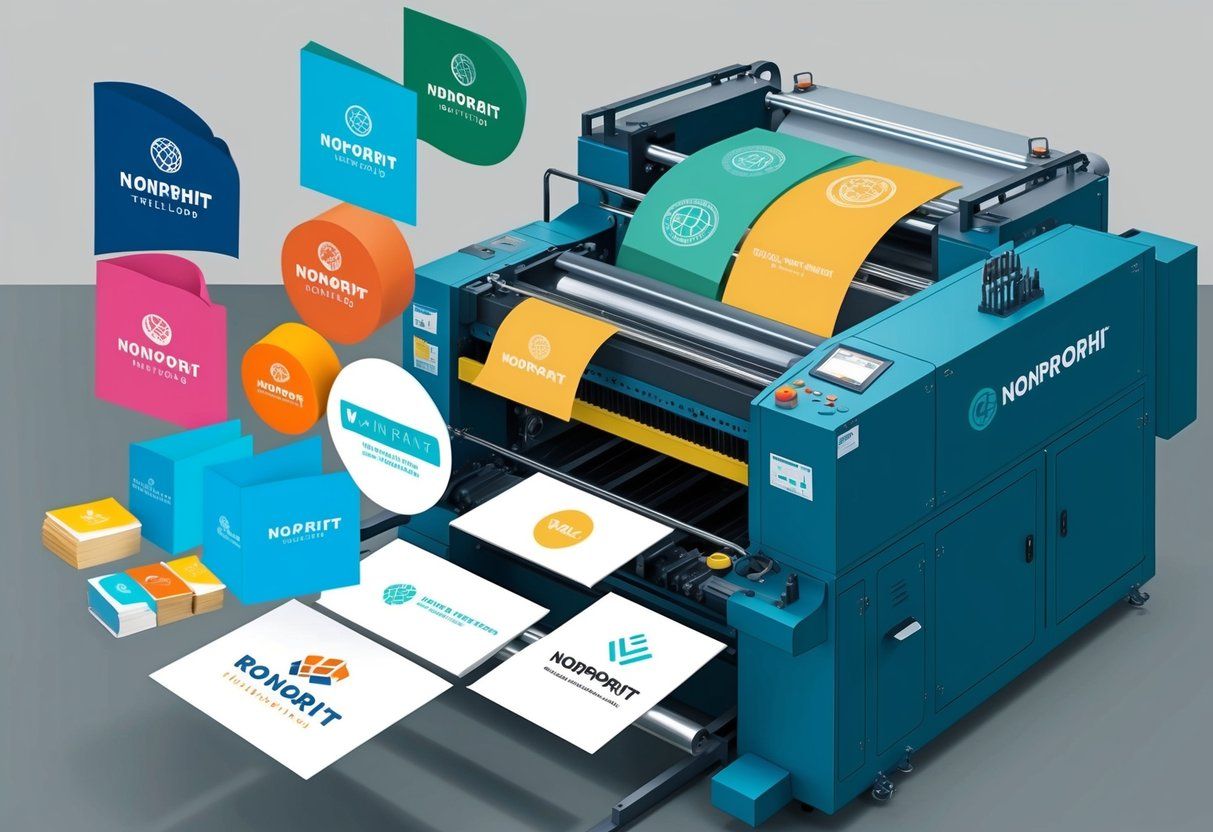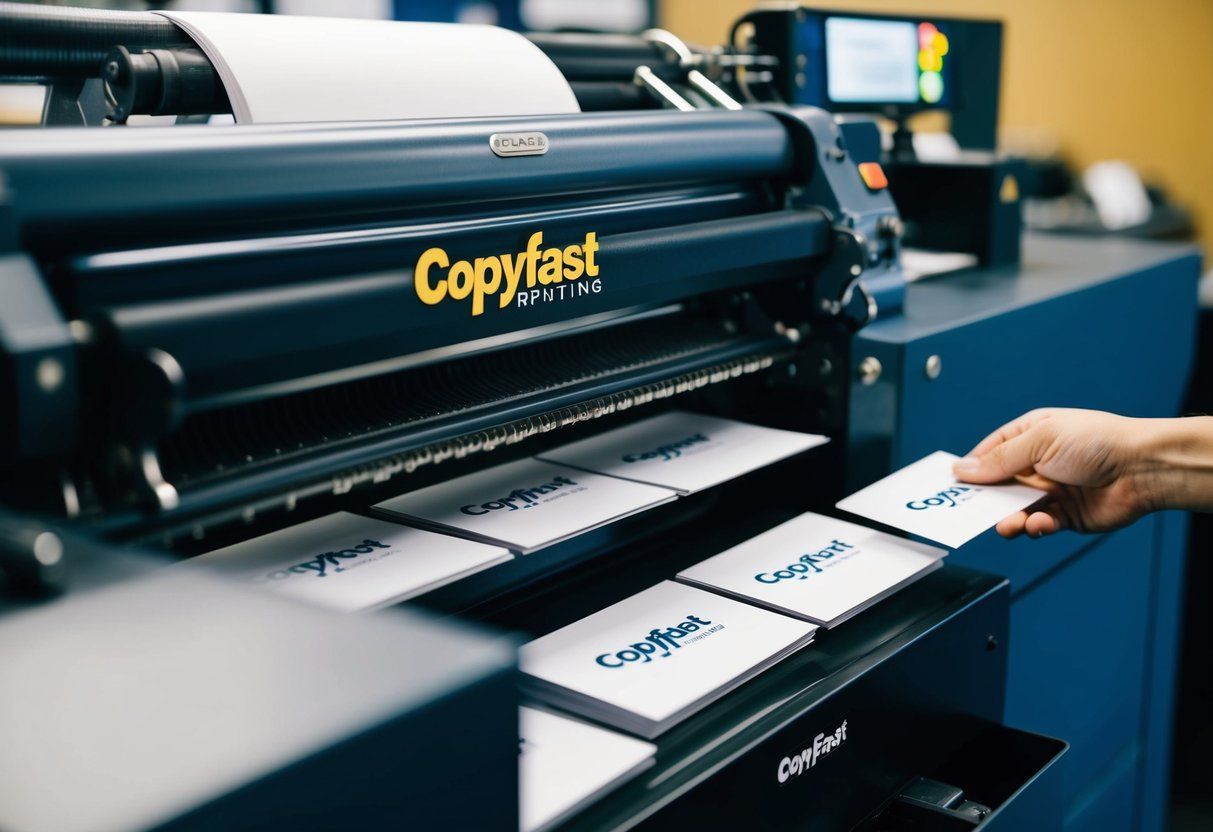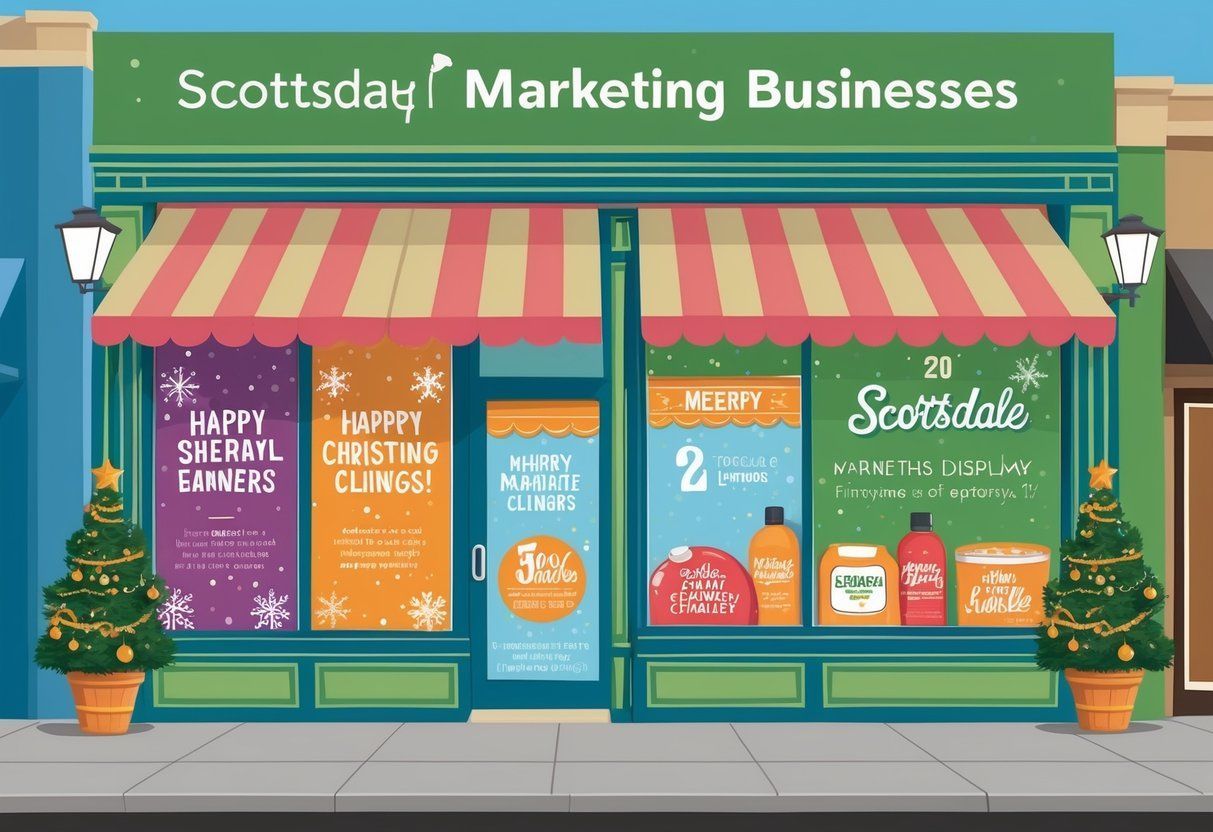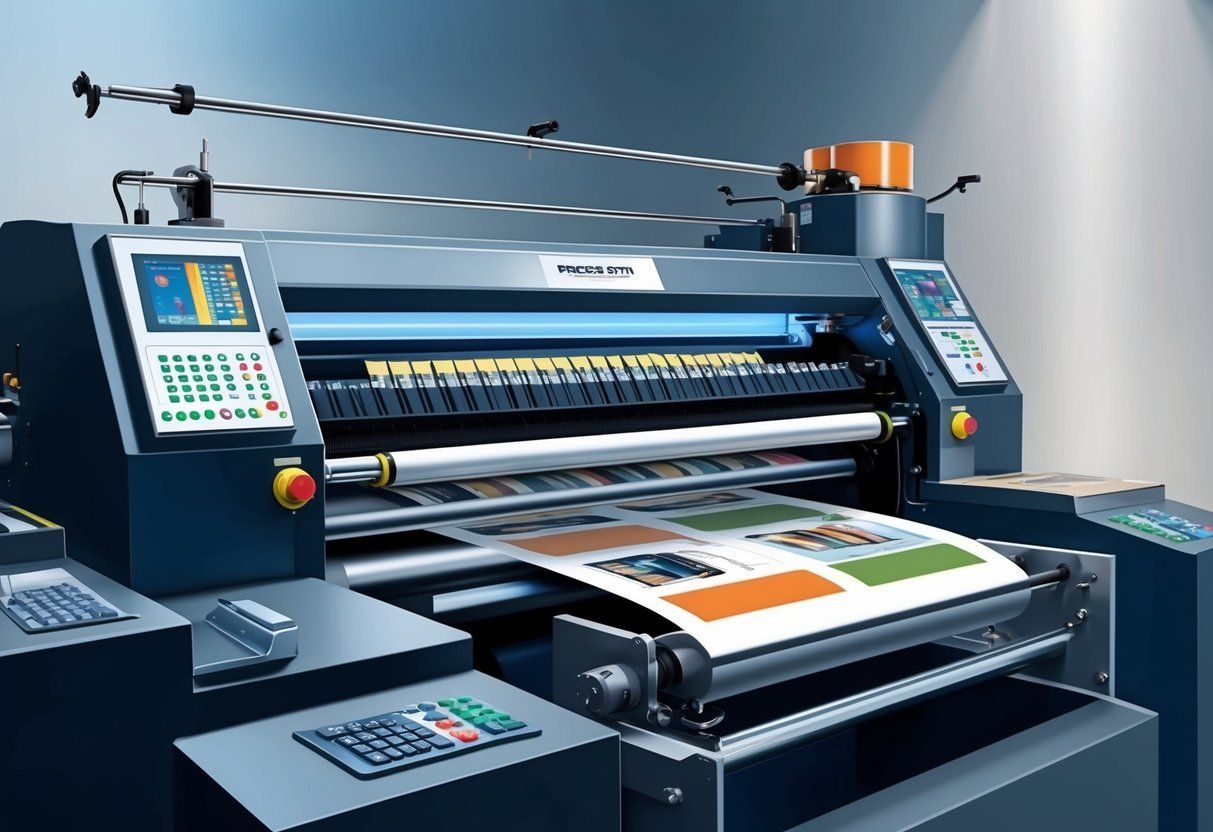Scottsdale Print Shop ) Mesa Print Shop ) Tempe Print Shop ) Phoenix Print Shop ) DC Ranch Print Shop ) Chandler Print Shop ) Peoria Print Shop ) Fountain Hills Print Shop ) Sun City Print Shop ) Glendale Print Shop ) Paradise Valley Print Shop ) Goodyear Print Shop ) Queen Creek Print Shop ) Avondale Print Shop ) Desert Ridge Print Shop ) Apache Junction Print Shop ) North Scottsdale Print Shop ) Pinnacle Peak Print Shop ) Grayawk Print Shop ) Kierland Print Shop ) Windsong Print Shop ) Mcdowell Mountain Ranch Print Shop ) Gainey Ranch Print Shop ) McCormick Ranch Print Shop ) Deer Valley Print Shop ) Arcadia Print Shop ) Troon Print Shop ) Silverleaf Print Shop ) Cave Creek Print Shop ) Old Town Print Shop ) South Scottsdale Print Shop ) Ancala Print Shop ) Central Phoenix Print Shop ) Carefree Print Shop ) Toleson Print Shop ) Ironwood Village Print Shop ) WIndgate Ranch Print Shop ) Northsight Print Shop ) Shea Print Shop ) Tatum Ranch Print Shop ) Casa Grande Print Shop ) Gilbert Print Shop ) Suprise Print Shop ) Buckeye Print Shop ) Scottsdale Banner Printing ) Mesa Banner Printing ) Tempe Banner Printing ) Phoenix Banner Printing ) DC Ranch Banner Printing ) Chandler Banner Printing ) Peoria Banner Printing ) Fountain Hills Banner Printing ) Sun City Banner Printing ) Glendale Banner Printing ) Paradise Valley Banner Printing ) Goodyear Banner Printing ) Queen Creek Banner Printing ) Avondale Banner Printing ) Desert Ridge Banner Printing ) Apache Junction Banner Printing ) North Scottsdale Banner Printing ) Pinnacle Peak Banner Printing ) Grayawk Banner Printing ) Kierland Banner Printing ) Windsong Banner Printing ) Mcdowell Mountain Ranch Banner Printing ) Gainey Ranch Banner Printing ) McCormick Ranch Banner Printing ) Deer Valley Banner Printing ) Arcadia Banner Printing ) Troon Banner Printing ) Silverleaf Banner Printing ) Cave Creek Banner Printing ) Old Town Banner Printing ) South Scottsdale Banner Printing ) Ancala Banner Printing ) Central Phoenix Banner Printing ) Carefree Banner Printing ) Toleson Banner Printing ) Ironwood Village Banner Printing ) WIndgate Ranch Banner Printing ) Northsight Banner Printing ) Shea Banner Printing ) Tatum Ranch Banner Printing ) Casa Grande Banner Printing ) Gilbert Banner Printing ) Suprise Banner Printing ) Buckeye Banner Printing ) Scottsdale Book Binding ) Mesa Book Binding ) Tempe Book Binding ) Phoenix Book Binding ) DC Ranch Book Binding ) Chandler Book Binding ) Peoria Book Binding ) Fountain Hills Book Binding ) Sun City Book Binding ) Glendale Book Binding ) Paradise Valley Book Binding ) Goodyear Book Binding ) Queen Creek Book Binding ) Avondale Book Binding ) Desert Ridge Book Binding ) Apache Junction Book Binding ) North Scottsdale Book Binding ) Pinnacle Peak Book Binding ) Grayawk Book Binding ) Kierland Book Binding ) Windsong Book Binding ) Mcdowell Mountain Ranch Book Binding ) Gainey Ranch Book Binding ) McCormick Ranch Book Binding ) Deer Valley Book Binding ) Arcadia Book Binding ) Troon Book Binding ) Silverleaf Book Binding ) Cave Creek Book Binding ) Old Town Book Binding ) South Scottsdale Book Binding ) Ancala Book Binding ) Central Phoenix Book Binding ) Carefree Book Binding ) Toleson Book Binding ) Ironwood Village Book Binding ) WIndgate Ranch Book Binding ) Northsight Book Binding ) Shea Book Binding ) Tatum Ranch Book Binding ) Casa Grande Book Binding ) Gilbert Book Binding ) Suprise Book Binding ) Buckeye Book Binding ) Scottsdale Booklet Printing ) Mesa Booklet Printing ) Tempe Booklet Printing ) Phoenix Booklet Printing ) DC Ranch Booklet Printing ) Chandler Booklet Printing ) Peoria Booklet Printing ) Fountain Hills Booklet Printing ) Sun City Booklet Printing ) Glendale Booklet Printing ) Paradise Valley Booklet Printing ) Goodyear Booklet Printing ) Queen Creek Booklet Printing ) Avondale Booklet Printing ) Desert Ridge Booklet Printing ) Apache Junction Booklet Printing ) North Scottsdale Booklet Printing ) Pinnacle Peak Booklet Printing ) Grayawk Booklet Printing ) Kierland Booklet Printing ) Windsong Booklet Printing ) Mcdowell Mountain Ranch Booklet Printing ) Gainey Ranch Booklet Printing ) McCormick Ranch Booklet Printing ) Deer Valley Booklet Printing ) Arcadia Booklet Printing ) Troon Booklet Printing ) Silverleaf Booklet Printing ) Cave Creek Booklet Printing ) Old Town Booklet Printing ) South Scottsdale Booklet Printing ) Ancala Booklet Printing ) Central Phoenix Booklet Printing ) Carefree Booklet Printing ) Toleson Booklet Printing ) Ironwood Village Booklet Printing ) WIndgate Ranch Booklet Printing ) Northsight Booklet Printing ) Shea Booklet Printing ) Tatum Ranch Booklet Printing ) Casa Grande Booklet Printing ) Gilbert Booklet Printing ) Suprise Booklet Printing ) Buckeye Booklet Printing ) Scottsdale Brochure Printing ) Mesa Brochure Printing ) Tempe Brochure Printing ) Phoenix Brochure Printing ) DC Ranch Brochure Printing ) Chandler Brochure Printing ) Peoria Brochure Printing ) Fountain Hills Brochure Printing ) Sun City Brochure Printing ) Glendale Brochure Printing ) Paradise Valley Brochure Printing ) Goodyear Brochure Printing ) Queen Creek Brochure Printing ) Avondale Brochure Printing ) Desert Ridge Brochure Printing ) Apache Junction Brochure Printing ) North Scottsdale Brochure Printing ) Pinnacle Peak Brochure Printing ) Grayawk Brochure Printing ) Kierland Brochure Printing ) Windsong Brochure Printing ) Mcdowell Mountain Ranch Brochure Printing ) Gainey Ranch Brochure Printing ) McCormick Ranch Brochure Printing ) Deer Valley Brochure Printing ) Arcadia Brochure Printing ) Troon Brochure Printing ) Silverleaf Brochure Printing ) Cave Creek Brochure Printing ) Old Town Brochure Printing ) South Scottsdale Brochure Printing ) Ancala Brochure Printing ) Central Phoenix Brochure Printing ) Carefree Brochure Printing ) Toleson Brochure Printing ) Ironwood Village Brochure Printing ) WIndgate Ranch Brochure Printing ) Northsight Brochure Printing ) Shea Brochure Printing ) Tatum Ranch Brochure Printing ) Casa Grande Brochure Printing ) Gilbert Brochure Printing ) Suprise Brochure Printing ) Buckeye Brochure Printing ) Scottsdale Business Card Printing ) Mesa Business Card Printing ) Tempe Business Card Printing ) Phoenix Business Card Printing ) DC Ranch Business Card Printing ) Chandler Business Card Printing ) Peoria Business Card Printing ) Fountain Hills Business Card Printing ) Sun City Business Card Printing ) Glendale Business Card Printing ) Paradise Valley Business Card Printing ) Goodyear Business Card Printing ) Queen Creek Business Card Printing ) Avondale Business Card Printing ) Desert Ridge Business Card Printing ) Apache Junction Business Card Printing ) North Scottsdale Business Card Printing ) Pinnacle Peak Business Card Printing ) Grayawk Business Card Printing ) Kierland Business Card Printing ) Windsong Business Card Printing ) Mcdowell Mountain Ranch Business Card Printing ) Gainey Ranch Business Card Printing ) McCormick Ranch Business Card Printing ) Deer Valley Business Card Printing ) Arcadia Business Card Printing ) Troon Business Card Printing ) Silverleaf Business Card Printing ) Cave Creek Business Card Printing ) Old Town Business Card Printing ) South Scottsdale Business Card Printing ) Ancala Business Card Printing ) Central Phoenix Business Card Printing ) Carefree Business Card Printing ) Toleson Business Card Printing ) Ironwood Village Business Card Printing ) WIndgate Ranch Business Card Printing ) Northsight Business Card Printing ) Shea Business Card Printing ) Tatum Ranch Business Card Printing ) Casa Grande Business Card Printing ) Gilbert Business Card Printing ) Suprise Business Card Printing ) Buckeye Business Card Printing ) Scottsdale Catalog Printing ) Mesa Catalog Printing ) Tempe Catalog Printing ) Phoenix Catalog Printing ) DC Ranch Catalog Printing ) Chandler Catalog Printing ) Peoria Catalog Printing ) Fountain Hills Catalog Printing ) Sun City Catalog Printing ) Glendale Catalog Printing ) Paradise Valley Catalog Printing ) Goodyear Catalog Printing ) Queen Creek Catalog Printing ) Avondale Catalog Printing ) Desert Ridge Catalog Printing ) Apache Junction Catalog Printing ) North Scottsdale Catalog Printing ) Pinnacle Peak Catalog Printing ) Grayawk Catalog Printing ) Kierland Catalog Printing ) Windsong Catalog Printing ) Mcdowell Mountain Ranch Catalog Printing ) Gainey Ranch Catalog Printing ) McCormick Ranch Catalog Printing ) Deer Valley Catalog Printing ) Arcadia Catalog Printing ) Troon Catalog Printing ) Silverleaf Catalog Printing ) Cave Creek Catalog Printing ) Old Town Catalog Printing ) South Scottsdale Catalog Printing ) Ancala Catalog Printing ) Central Phoenix Catalog Printing ) Carefree Catalog Printing ) Toleson Catalog Printing ) Ironwood Village Catalog Printing ) WIndgate Ranch Catalog Printing ) Northsight Catalog Printing ) Shea Catalog Printing ) Tatum Ranch Catalog Printing ) Casa Grande Catalog Printing ) Gilbert Catalog Printing ) Suprise Catalog Printing ) Buckeye Catalog Printing ) Scottsdale Commercial Printing ) Mesa Commercial Printing ) Tempe Commercial Printing ) Phoenix Commercial Printing ) DC Ranch Commercial Printing ) Chandler Commercial Printing ) Peoria Commercial Printing ) Fountain Hills Commercial Printing ) Sun City Commercial Printing ) Glendale Commercial Printing ) Paradise Valley Commercial Printing ) Goodyear Commercial Printing ) Queen Creek Commercial Printing ) Avondale Commercial Printing ) Desert Ridge Commercial Printing ) Apache Junction Commercial Printing ) North Scottsdale Commercial Printing ) Pinnacle Peak Commercial Printing ) Grayawk Commercial Printing ) Kierland Commercial Printing ) Windsong Commercial Printing ) Mcdowell Mountain Ranch Commercial Printing ) Gainey Ranch Commercial Printing ) McCormick Ranch Commercial Printing ) Deer Valley Commercial Printing ) Arcadia Commercial Printing ) Troon Commercial Printing ) Silverleaf Commercial Printing ) Cave Creek Commercial Printing ) Old Town Commercial Printing ) South Scottsdale Commercial Printing ) Ancala Commercial Printing ) Central Phoenix Commercial Printing ) Carefree Commercial Printing ) Toleson Commercial Printing ) Ironwood Village Commercial Printing ) WIndgate Ranch Commercial Printing ) Northsight Commercial Printing ) Shea Commercial Printing ) Tatum Ranch Commercial Printing ) Casa Grande Commercial Printing ) Gilbert Commercial Printing ) Suprise Commercial Printing ) Buckeye Commercial Printing ) Scottsdale Coroplast Signs ) Mesa Coroplast Signs ) Tempe Coroplast Signs ) Phoenix Coroplast Signs ) Scottsdale Digital Printing ) Mesa Digital Printing ) Tempe Digital Printing ) Phoenix Digital Printing ) DC Ranch Digital Printing ) Chandler Digital Printing ) Peoria Digital Printing ) Fountain Hills Digital Printing ) Sun City Digital Printing ) Glendale Digital Printing ) Paradise Valley Digital Printing ) Goodyear Digital Printing ) Queen Creek Digital Printing ) Avondale Digital Printing ) Desert Ridge Digital Printing ) Apache Junction Digital Printing ) North Scottsdale Digital Printing ) Pinnacle Peak Digital Printing ) Grayawk Digital Printing ) Kierland Digital Printing ) Windsong Digital Printing ) Mcdowell Mountain Ranch Digital Printing ) Gainey Ranch Digital Printing ) McCormick Ranch Digital Printing ) Deer Valley Digital Printing ) Arcadia Digital Printing ) Troon Digital Printing ) Silverleaf Digital Printing ) Cave Creek Digital Printing ) Old Town Digital Printing ) South Scottsdale Digital Printing ) Ancala Digital Printing ) Central Phoenix Digital Printing ) Carefree Digital Printing ) Toleson Digital Printing ) Ironwood Village Digital Printing ) WIndgate Ranch Digital Printing ) Northsight Digital Printing ) Shea Digital Printing ) Tatum Ranch Digital Printing ) Casa Grande Digital Printing ) Gilbert Digital Printing ) Suprise Digital Printing ) Buckeye Digital Printing ) Scottsdale Direct Mailing Services ) Mesa Direct Mailing Services ) Tempe Direct Mailing Services ) Phoenix Direct Mailing Services ) DC Ranch Direct Mailing Services ) Chandler Direct Mailing Services ) Peoria Direct Mailing Services ) Fountain Hills Direct Mailing Services ) Sun City Direct Mailing Services ) Glendale Direct Mailing Services ) Paradise Valley Direct Mailing Services ) Goodyear Direct Mailing Services ) Queen Creek Direct Mailing Services ) Avondale Direct Mailing Services ) Desert Ridge Direct Mailing Services ) Apache Junction Direct Mailing Services ) North Scottsdale Direct Mailing Services ) Pinnacle Peak Direct Mailing Services ) Grayawk Direct Mailing Services ) Kierland Direct Mailing Services ) Windsong Direct Mailing Services ) Mcdowell Mountain Ranch Direct Mailing Services ) Gainey Ranch Direct Mailing Services ) McCormick Ranch Direct Mailing Services ) Deer Valley Direct Mailing Services ) Arcadia Direct Mailing Services ) Troon Direct Mailing Services ) Silverleaf Direct Mailing Services ) Cave Creek Direct Mailing Services ) Old Town Direct Mailing Services ) South Scottsdale Direct Mailing Services ) Ancala Direct Mailing Services ) Central Phoenix Direct Mailing Services ) Carefree Direct Mailing Services ) Toleson Direct Mailing Services ) Ironwood Village Direct Mailing Services ) WIndgate Ranch Direct Mailing Services ) Northsight Direct Mailing Services ) Shea Direct Mailing Services ) Tatum Ranch Direct Mailing Services ) Casa Grande Direct Mailing Services ) Gilbert Direct Mailing Services ) Suprise Direct Mailing Services ) Buckeye Direct Mailing Services ) Scottsdale Flyer Printing ) Mesa Flyer Printing ) Tempe Flyer Printing ) Phoenix Flyer Printing ) DC Ranch Flyer Printing ) Chandler Flyer Printing ) Peoria Flyer Printing ) Fountain Hills Flyer Printing ) Sun City Flyer Printing ) Glendale Flyer Printing ) Paradise Valley Flyer Printing ) Goodyear Flyer Printing ) Queen Creek Flyer Printing ) Avondale Flyer Printing ) Desert Ridge Flyer Printing ) Apache Junction Flyer Printing ) North Scottsdale Flyer Printing ) Pinnacle Peak Flyer Printing ) Grayawk Flyer Printing ) Kierland Flyer Printing ) Windsong Flyer Printing ) Mcdowell Mountain Ranch Flyer Printing ) Gainey Ranch Flyer Printing ) McCormick Ranch Flyer Printing ) Deer Valley Flyer Printing ) Arcadia Flyer Printing ) Troon Flyer Printing ) Silverleaf Flyer Printing ) Cave Creek Flyer Printing ) Old Town Flyer Printing ) South Scottsdale Flyer Printing ) Ancala Flyer Printing ) Central Phoenix Flyer Printing ) Carefree Flyer Printing ) Toleson Flyer Printing ) Ironwood Village Flyer Printing ) WIndgate Ranch Flyer Printing ) Northsight Flyer Printing ) Shea Flyer Printing ) Tatum Ranch Flyer Printing ) Casa Grande Flyer Printing ) Gilbert Flyer Printing ) Suprise Flyer Printing ) Buckeye Flyer Printing ) Scottsdale Graphic Design ) Mesa Graphic Design ) Tempe Graphic Design ) Phoenix Graphic Design ) DC Ranch Graphic Design ) Chandler Graphic Design ) Peoria Graphic Design ) Fountain Hills Graphic Design ) Sun City Graphic Design ) Glendale Graphic Design ) Paradise Valley Graphic Design ) Goodyear Graphic Design ) Queen Creek Graphic Design ) Avondale Graphic Design ) Desert Ridge Graphic Design ) Apache Junction Graphic Design ) North Scottsdale Graphic Design ) Pinnacle Peak Graphic Design ) Grayawk Graphic Design ) Kierland Graphic Design ) Windsong Graphic Design ) Mcdowell Mountain Ranch Graphic Design ) Gainey Ranch Graphic Design ) McCormick Ranch Graphic Design ) Deer Valley Graphic Design ) Arcadia Graphic Design ) Troon Graphic Design ) Silverleaf Graphic Design ) Cave Creek Graphic Design ) Old Town Graphic Design ) South Scottsdale Graphic Design ) Ancala Graphic Design ) Central Phoenix Graphic Design ) Carefree Graphic Design ) Toleson Graphic Design ) Ironwood Village Graphic Design ) WIndgate Ranch Graphic Design ) Northsight Graphic Design ) Shea Graphic Design ) Tatum Ranch Graphic Design ) Casa Grande Graphic Design ) Gilbert Graphic Design ) Suprise Graphic Design ) Buckeye Graphic Design ) Scottsdale Large Format Printing ) Mesa Large Format Printing ) Tempe Large Format Printing ) Phoenix Large Format Printing ) DC Ranch Large Format Printing ) Chandler Large Format Printing ) Peoria Large Format Printing ) Fountain Hills Large Format Printing ) Sun City Large Format Printing ) Glendale Large Format Printing ) Paradise Valley Large Format Printing ) Goodyear Large Format Printing ) Peoria Postcard Printing ) Fountain Hills Postcard Printing ) Sun City Postcard Printing ) Glendale Postcard Printing ) Paradise Valley Postcard Printing ) Goodyear Postcard Printing ) Queen Creek Postcard Printing ) Avondale Postcard Printing ) Desert Ridge Postcard Printing ) Apache Junction Postcard Printing ) North Scottsdale Postcard Printing ) Pinnacle Peak Postcard Printing ) Grayawk Postcard Printing ) Kierland Postcard Printing ) Windsong Postcard Printing ) Mcdowell Mountain Ranch Postcard Printing ) Gainey Ranch Postcard Printing ) McCormick Ranch Postcard Printing ) Deer Valley Postcard Printing ) Arcadia Postcard Printing ) Troon Postcard Printing ) Silverleaf Postcard Printing ) Cave Creek Postcard Printing ) Old Town Postcard Printing ) South Scottsdale Postcard Printing ) Ancala Postcard Printing ) Central Phoenix Postcard Printing ) Carefree Postcard Printing ) Toleson Postcard Printing ) Ironwood Village Postcard Printing ) WIndgate Ranch Postcard Printing ) Northsight Postcard Printing ) Shea Postcard Printing ) Tatum Ranch Postcard Printing ) Casa Grande Postcard Printing ) Gilbert Postcard Printing ) Suprise Postcard Printing ) Buckeye Postcard Printing ) Scottsdale Poster Printing ) Mesa Poster Printing ) Tempe Poster Printing ) Phoenix Poster Printing ) DC Ranch Poster Printing ) Chandler Poster Printing ) Peoria Poster Printing ) Fountain Hills Poster Printing ) Sun City Poster Printing ) Glendale Poster Printing ) Paradise Valley Poster Printing ) Goodyear Poster Printing ) Queen Creek Poster Printing ) Avondale Poster Printing ) Desert Ridge Poster Printing ) Apache Junction Poster Printing ) North Scottsdale Poster Printing ) Pinnacle Peak Poster Printing ) Grayawk Poster Printing ) Kierland Poster Printing ) Windsong Poster Printing ) Mcdowell Mountain Ranch Poster Printing ) Gainey Ranch Poster Printing ) McCormick Ranch Poster Printing ) Deer Valley Poster Printing ) Arcadia Poster Printing ) Troon Poster Printing ) Silverleaf Poster Printing ) Cave Creek Poster Printing ) Old Town Poster Printing ) South Scottsdale Poster Printing ) Ancala Poster Printing ) Central Phoenix Poster Printing ) Carefree Poster Printing ) Toleson Poster Printing ) Ironwood Village Poster Printing ) WIndgate Ranch Poster Printing ) Northsight Poster Printing ) Shea Poster Printing ) Tatum Ranch Poster Printing ) Casa Grande Poster Printing ) Gilbert Poster Printing ) Suprise Poster Printing ) Buckeye Poster Printing ) Scottsdale Promotional Items Printing )
Large Scale Printing Solutions: Streamlining Your Business’s Printing Needs
Large scale printing solutions have become increasingly popular in recent years as businesses and individuals seek to create larger-than-life prints for a variety of purposes. Large format prints are used in a variety of industries, from advertising and marketing to architecture and design, and can be used to create everything from banners and billboards to building facades and sculptures.
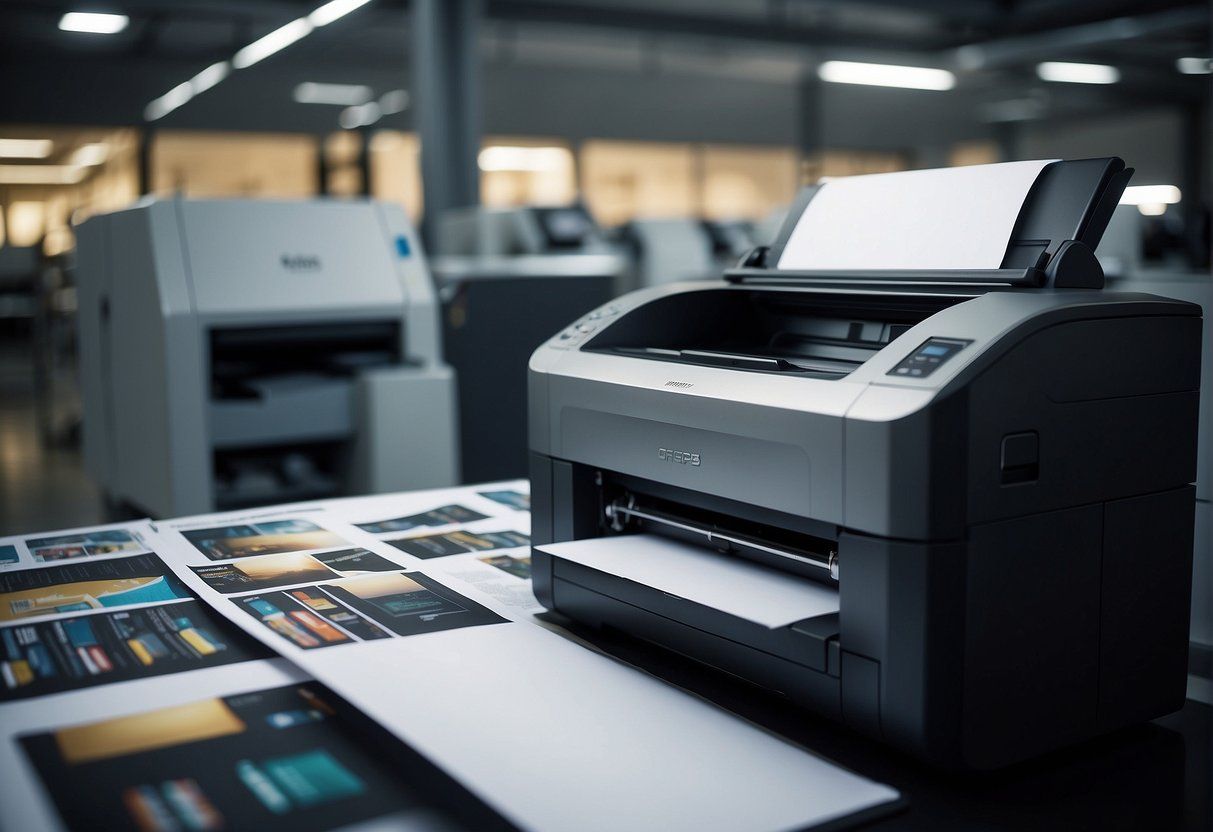
Understanding Large Scale Printing is crucial for anyone looking to create large format prints. Large format printing involves printing on materials that are too large to fit on standard printing presses, requiring specialized equipment and printing techniques. Design Considerations for Large Prints are also important to keep in mind, as designing for large format prints requires a different approach than designing for smaller prints.
Production Techniques for large format prints vary depending on the materials being used and the desired outcome. Advances in printing technology have made it possible to print on a wide range of materials, including vinyl, fabric, and metal. Logistics of Large Scale Printing can also be challenging, as large format prints require specialized equipment for transport and installation. Choosing the Right Printing Services is crucial to ensuring high-quality large format prints that meet your specific needs and requirements.
Key Takeaways
- Large scale printing solutions are becoming increasingly popular across a variety of industries.
- Understanding Large Scale Printing and Design Considerations for Large Prints are important for creating high-quality large format prints.
- Choosing the Right Printing Services is crucial to ensuring that your large format prints meet your specific needs and requirements.
Understanding Large Scale Printing
Large format printing is a printing process that produces prints that are larger than the standard print sizes. This type of printing is typically used to produce banners, posters, and other large-scale graphics. Large format printing requires specialized equipment that can handle the size and weight of the materials used in the printing process.
Types of Large Format Printers
There are several types of large format printers available on the market, each with its own set of advantages and disadvantages. The most common types of large format printers are:
- Inkjet Printers: These printers use ink to produce high-quality prints on a variety of materials, including paper, vinyl, canvas, and fabric. Inkjet printers are popular because they are versatile and can produce prints with high resolution and vibrant colors.
- Dye Sublimation Printers: These printers use heat to transfer dye onto a variety of materials, including fabric, metal, and plastic. Dye sublimation printers are popular for producing high-quality prints on materials that cannot be printed on using traditional inkjet printers.
- Solvent Printers: These printers use solvent-based inks to produce prints on materials such as vinyl and other plastics. Solvent printers are popular for producing outdoor signage and graphics that can withstand exposure to the elements.
Importance of Resolution in Large Prints
Resolution is an important factor to consider when producing large format prints. The resolution of a print is measured in dots per inch (dpi) and refers to the number of dots that can be printed per inch of material. The higher the resolution, the sharper and more detailed the image will be.
When producing large format prints, it is important to choose a printer with a high resolution to ensure that the image is clear and sharp. However, it is also important to consider the viewing distance of the print. Prints that will be viewed from a distance can have a lower resolution than prints that will be viewed up close.
Materials and Substrates
Large format printing can be done on a variety of materials, including paper, vinyl, canvas, and fabric. The choice of material will depend on the intended use of the print and the environment in which it will be displayed.
Paper is a popular choice for indoor prints, while vinyl and other plastics are popular for outdoor signage and graphics. Canvas and fabric are popular for producing art prints and other decorative items.
When selecting a material for large format printing, it is important to consider factors such as durability, color vibrancy, and texture. Some materials may require special inks or printing processes to produce the desired results.
Design Considerations for Large Prints
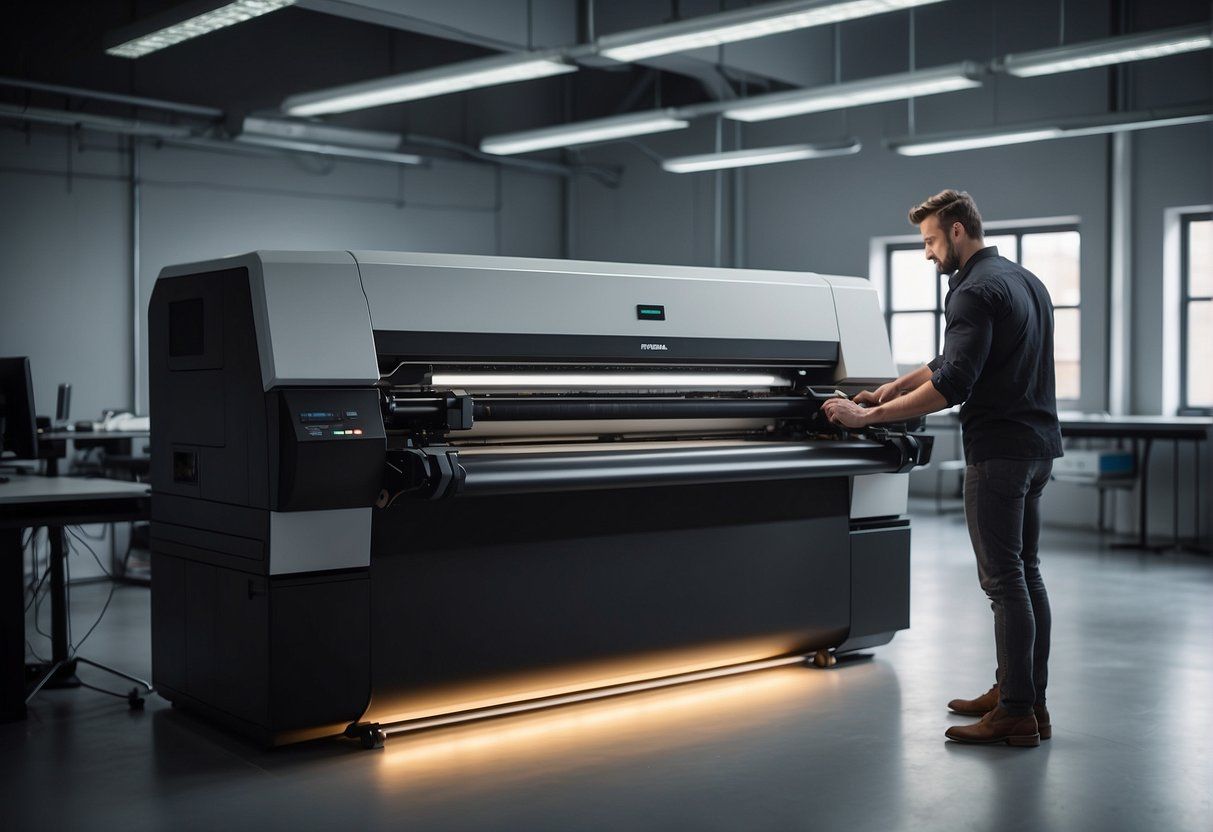
Large format printing can be an effective way to grab attention and convey information in a visually appealing way. However, creating a successful large print requires careful consideration of several design factors. In this section, we will discuss two important design considerations for large prints: effective visual design and choosing the right paper sizes and materials.
Effective Visual Design for Large Formats
Designing for large formats requires different considerations than designing for smaller prints. Large prints need to be eye-catching and easy to read from a distance. This means using bold, high-contrast colors, large fonts, and clear, simple images or photographs.
To ensure that the design is effective, it is important to use a high-quality image or photograph that is at least 300 dpi (dots per inch). This will ensure that the image is sharp and clear, even when printed at a large size. Additionally, the design should be created in a vector format to ensure that it can be scaled up without losing quality.
Choosing the Right Paper Sizes and Materials
Choosing the right paper size and material is also an important consideration when designing a large print. The paper size should be large enough to accommodate the design while still being manageable to print and transport. Common large paper sizes include 24×36 inches, 36×48 inches, and 48×72 inches.
The material used for large prints should also be carefully considered. The material should be durable enough to withstand handling and transportation, and should also be appropriate for the environment where it will be displayed. For example, if the print will be displayed outdoors, it should be printed on a weather-resistant material.
Overall, effective design and careful consideration of paper sizes and materials are key factors in creating successful large prints. By following these guidelines, designers can create visually appealing prints that effectively convey their message.
Production Techniques
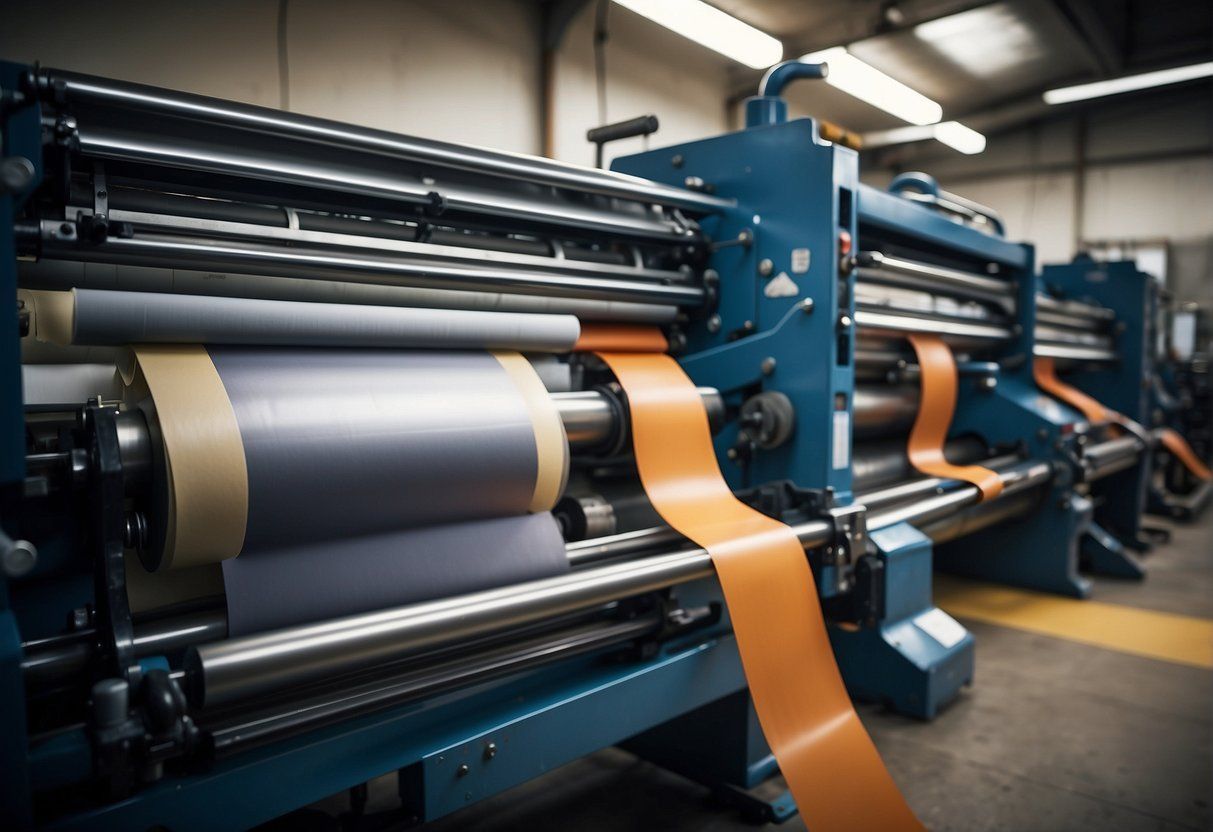
Large scale printing solutions require specialized production techniques that are designed to produce high-quality prints quickly and efficiently. These techniques include digital printing processes, inkjet vs. dye-sublimation printing, and finishing techniques such as laminating, mounting, and framing.
Digital Printing Processes
Digital printing is a technique that uses digital files to produce prints. It is a fast and efficient process that is ideal for large scale printing solutions. Digital printing processes include inkjet printing, dye-sublimation printing, and laser printing.
Inkjet vs. Dye-Sublimation Printing
Inkjet printing is a popular digital printing process that uses ink to produce prints. It is a versatile process that can produce high-quality prints on a variety of surfaces. Dye-sublimation printing is a process that uses heat to transfer dye onto a surface. It is ideal for producing prints on fabrics and other materials that require a high level of detail and color accuracy.
Finishing Techniques: Laminating, Mounting, and Framing
Finishing techniques such as laminating, mounting, and framing are essential for producing high-quality large scale prints. Laminating is a process that involves applying a protective layer to the surface of a print to prevent damage from moisture, UV light, and other environmental factors. Mounting involves attaching a print to a backing board to provide support and stability. Framing is a process that involves enclosing a print in a frame to protect it and enhance its appearance.
Overall, large scale printing solutions require specialized production techniques that are designed to produce high-quality prints quickly and efficiently. By using digital printing processes, inkjet vs. dye-sublimation printing, and finishing techniques such as laminating, mounting, and framing, large scale prints can be produced that are both durable and visually stunning.
Applications of Large Scale Printing
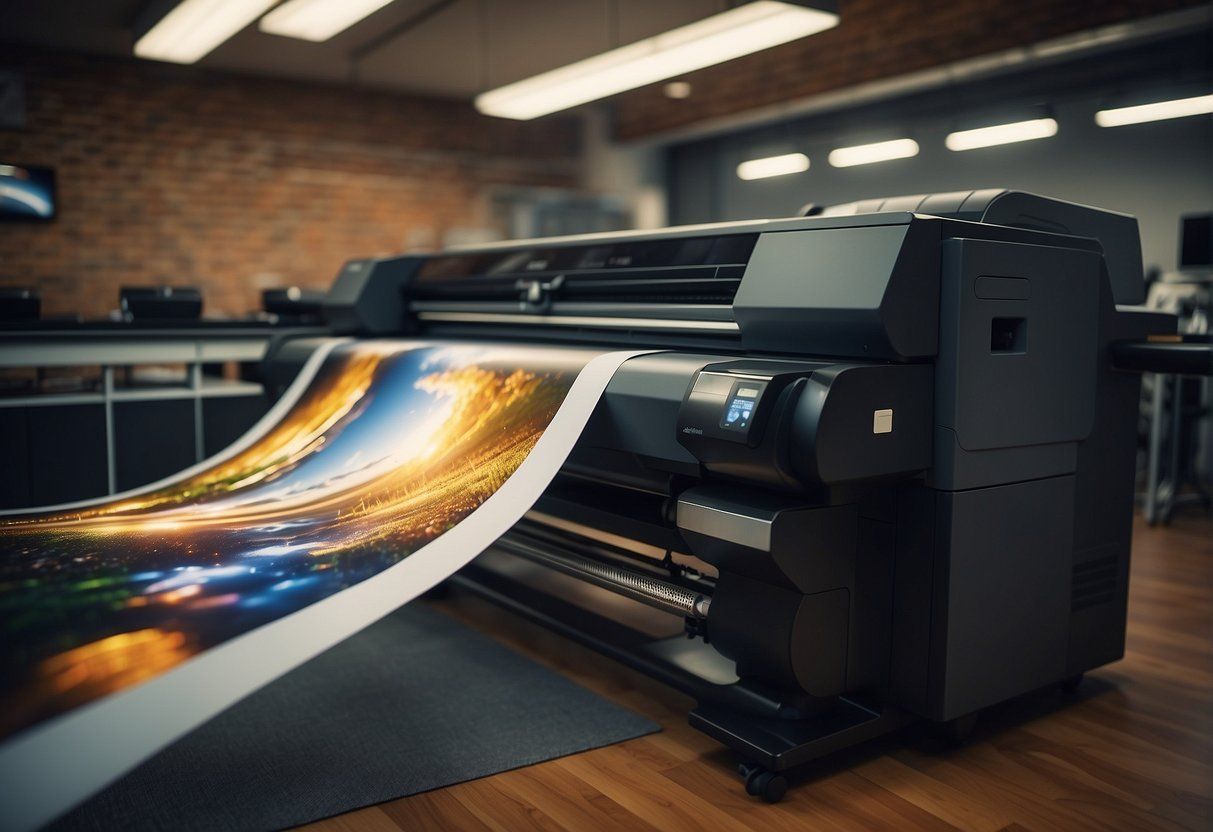
Large scale printing solutions have a wide range of applications in various fields such as advertising, marketing, interior decor, and outdoor applications. Here are a few examples of how large scale printing can be used in different industries:
Advertising and Marketing Materials
Large scale printing is a great way to create eye-catching advertising and marketing materials. From posters to banners, businesses can use large scale printing to create high-quality, attention-grabbing materials that can be displayed in a variety of locations. Large scale printing allows businesses to create materials that are larger than life, making it easier for them to stand out from the competition.
Custom Banners and Signs for Business
Custom banners and signs are an essential part of any business’s marketing strategy. Large scale printing makes it easy to create custom banners and signs that are both high-quality and durable. Businesses can use large scale printing to create banners and signs that are tailored to their specific needs, whether it’s for a trade show, a new product launch, or a grand opening.
Interior Decor: Murals and Wallpaper
Large scale printing is not just limited to advertising and marketing materials. It can also be used for interior decor purposes. Murals and wallpaper can be printed on a large scale, making it possible to create stunning designs that can transform any space. Large scale printing allows for high-quality, detailed designs that can be printed on a variety of materials, including vinyl and canvas.
Outdoor Applications: Billboards and Building Wraps
Large scale printing is also ideal for outdoor applications such as billboards and building wraps. Billboards can be printed on a large scale, making it possible to create eye-catching designs that can be seen from a distance. Building wraps are another popular outdoor application for large scale printing. They can be used to cover entire buildings, creating a unique advertising opportunity for businesses.
In summary, large scale printing solutions have a wide range of applications in various industries. From advertising and marketing materials to interior decor and outdoor applications, businesses can use large scale printing to create high-quality, attention-grabbing materials that can help them stand out from the competition.
Product Options and Enhancements
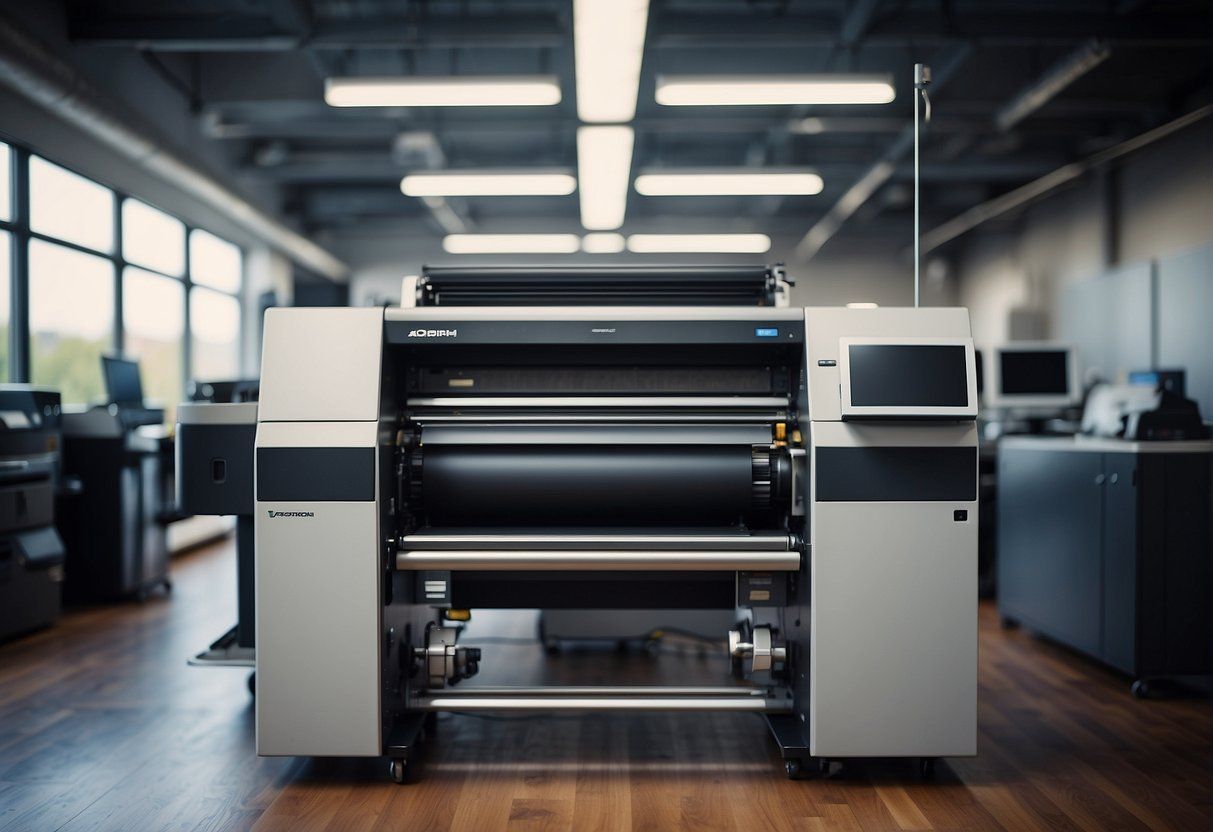
Large scale printing solutions offer a wide range of product options and enhancements to meet the needs of businesses and individuals. These options include weather-resistant and durable materials, as well as special features such as scratch-resistant coatings, eyelets, and banner stands.
Weather-Resistant and Durable Options
For outdoor use, weather-resistant printing options are essential to ensure that the product can withstand the elements. Large scale printing solutions offer a variety of options, including vinyl, mesh, and PVC materials. Vinyl is a popular choice for outdoor banners and signs due to its durability and resistance to fading. Mesh is another option that is ideal for windy conditions, as it allows air to pass through the material. PVC is a versatile material that is weather-resistant and can be used for a variety of applications, including outdoor banners, signs, and billboards.
Special Features: Scratch-Resistant, Eyelets, and Banner Stands
In addition to weather-resistant materials, large scale printing solutions offer special features that enhance the durability and functionality of the product. Scratch-resistant coatings can be applied to the surface of the material to protect it from damage and extend its lifespan. Eyelets can also be added to banners and signs to make them easier to hang and secure. Banner stands are another popular option that allows the product to be displayed in a variety of settings, including trade shows and events.
Overall, large scale printing solutions offer a range of product options and enhancements to meet the needs of businesses and individuals. Whether you need a weather-resistant banner for outdoor use or a scratch-resistant sign for indoor use, there is a solution available to meet your needs.
Logistics of Large Scale Printing
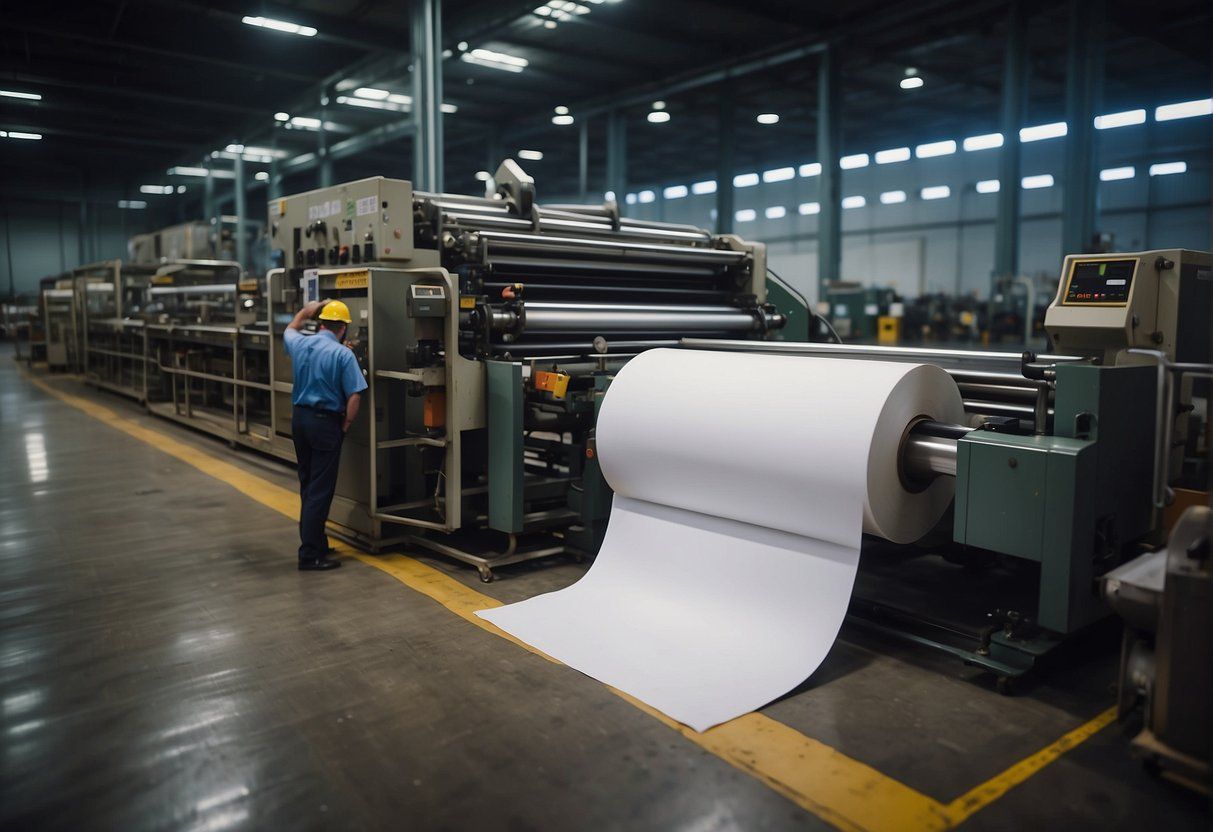
Large scale printing solutions require careful consideration of logistics to ensure that the printing process is efficient and cost-effective. This section will explore the pricing and budget considerations, collaboration and customer service, and prepress and proofing aspects of logistics in large scale printing.
Pricing and Budget Considerations
Pricing and budget considerations are crucial in large scale printing solutions. It is important to find a printing partner who can offer competitive pricing while maintaining high quality standards. The pricing structure should be transparent and easy to understand. It is also important to consider the budget constraints of the project and ensure that the printing partner can work within those limits.
Collaboration and Customer Service
Collaboration and customer service are key components of logistics in large scale printing. Effective communication between the printing partner and the client is essential to ensure that the project is completed to the client’s satisfaction. The printing partner should be able to offer guidance and support throughout the printing process, from prepress to delivery. Customer service should be responsive and helpful, addressing any concerns or issues that arise in a timely manner.
Prepress and Proofing
Prepress and proofing are critical components of the printing process. The printing partner should have a team of experts who can ensure that the artwork is print-ready and that the final product meets the client’s specifications. The prepress process should include a thorough review of the artwork, including color correction and file preparation. The proofing process should include a final review of the artwork before printing to ensure that the final product meets the client’s expectations.
In conclusion, logistics is a critical component of large scale printing solutions. Pricing and budget considerations, collaboration and customer service, and prepress and proofing are all essential aspects of logistics in large scale printing. Finding a printing partner who can offer competitive pricing, effective communication, and high quality standards is key to ensuring the success of a large scale printing project.
Advancements in Printing Technology
Printing technology has come a long way in recent years, with new innovations and advancements that have revolutionized the industry. Two of the most notable advancements are in wide format printing and sustainability in printing solutions.
Innovations in Wide Format Printing
Wide format printing has been around for a while, but recent advancements in technology have made it more accessible and affordable. This type of printing allows for larger prints, which is ideal for banners, billboards, and other large-scale advertising materials. In addition, the quality of wide format printing has improved significantly, with higher resolutions and better color accuracy.
One of the most notable innovations in wide format printing is the use of UV-curable inks. These inks are cured by UV light, which makes them more durable and resistant to fading. They also dry faster, which means that prints can be produced more quickly. Another innovation is the use of latex inks, which are more environmentally friendly than traditional solvent-based inks.
Sustainability in Printing Solutions
Sustainability is a growing concern in all industries, and printing is no exception. Many companies are looking for ways to reduce their environmental impact and adopt more sustainable practices. Fortunately, there are many printing solutions that are both high quality and environmentally friendly.
One of the most notable sustainability innovations is the use of recycled paper. This type of paper is made from recycled materials and is just as high quality as non-recycled paper. Another innovation is the use of soy-based inks, which are made from renewable resources and are biodegradable.
In addition to these innovations, many printing companies are adopting sustainable practices in their operations. For example, they may use energy-efficient equipment, recycle waste materials, and reduce their water usage.
Overall, advancements in printing technology have made it easier and more affordable to produce high-quality prints on a large scale. By adopting sustainable practices and using innovative materials, printing companies can reduce their environmental impact while still producing top-quality prints.
Choosing the Right Printing Services
When it comes to large scale printing tasks, choosing the right printing partner is crucial. A good printing service can provide custom solutions to meet the unique needs of a business. Here are some criteria to consider when selecting a printing partner:
Criteria for Selecting a Printing Partner
- Experience and Expertise: Look for a printing partner with years of experience in the industry. They should have the expertise to handle large scale printing tasks and provide high-quality prints.
- Variety of Materials: A good printing partner should offer a variety of materials to choose from. This includes different paper stocks, inks, and finishes. The more options available, the more flexibility a business has to create the perfect print.
- High-Quality Prints: Quality is key when it comes to large scale printing. The printing partner should have state-of-the-art equipment and technology to produce high-quality prints. This includes the ability to print in high resolution for sharp and clear images.
- Vibrant Colors: When printing marketing materials, vibrant colors are important to catch the eye of potential customers. The printing partner should have the ability to produce vivid and accurate colors.
Custom Solutions for Unique Business Needs
Every business has unique needs when it comes to printing. A good printing partner should be able to provide custom solutions to meet those needs. This includes:
- Custom Sizes and Shapes: If a business needs a print in a specific size or shape, the printing partner should be able to accommodate those requests.
- Variable Data Printing: For businesses that need to print different versions of a document with unique information, variable data printing is essential. A good printing partner should have the technology to handle variable data printing.
- Fulfillment Services: Some businesses require printing and shipping services. A good printing partner should be able to provide fulfillment services to make the process seamless.
Choosing the right printing partner can make a big difference in the success of a large scale printing project. By considering these criteria and custom solutions, businesses can find a printing partner that meets their unique needs.
Frequently Asked Questions
What are the best practices for managing large scale printing projects?
Managing a large scale printing project requires careful planning and execution. To ensure that the project runs smoothly, it is important to define the scope of the project, set clear goals and timelines, and establish a budget. Communication with all stakeholders is also crucial to ensure that everyone is on the same page. Regular progress updates and quality control checks can help to identify and address any issues before they become major problems.
How do I choose the right materials for large format printing?
Choosing the right materials for large format printing depends on the specific needs of the project. Factors to consider include the type of surface the print will be applied to, the expected lifespan of the print, and the environmental conditions the print will be exposed to. Common materials for large format printing include vinyl, fabric, and paper. It is important to work with a printing professional who can advise on the best material options for your specific project.
What are the differences between various large scale printing techniques?
There are several large scale printing techniques available, including digital printing, screen printing, and offset printing. Digital printing is a popular choice for its speed and versatility, while screen printing is ideal for producing high-quality, long-lasting prints. Offset printing is often used for large print runs due to its efficiency and cost-effectiveness. It is important to work with a printing professional who can advise on the best printing technique for your specific needs.
How can I find reliable large scale printing services in my area?
Finding reliable large scale printing services in your area can be challenging. It is important to research potential providers and read reviews from past customers. Asking for referrals from colleagues or industry associations can also be helpful. When evaluating potential providers, consider factors such as their experience, equipment, and reputation for quality and customer service.
What are the cost considerations for large format printing jobs?
Cost considerations for large format printing jobs depend on several factors, including the size and complexity of the project, the materials and printing technique used, and any finishing or installation requirements. It is important to establish a budget and obtain quotes from multiple providers to ensure that you are getting a fair price. Working with a printing professional who can advise on cost-saving measures can also help to keep costs under control.
Which software solutions are optimal for preparing files for large scale printing?
There are several software solutions available for preparing files for large scale printing, including Adobe Photoshop, Illustrator, and InDesign. These programs allow for precise control over image resolution, color management, and file format. It is important to work with a printing professional who can advise on the best software solutions for your specific needs.…


